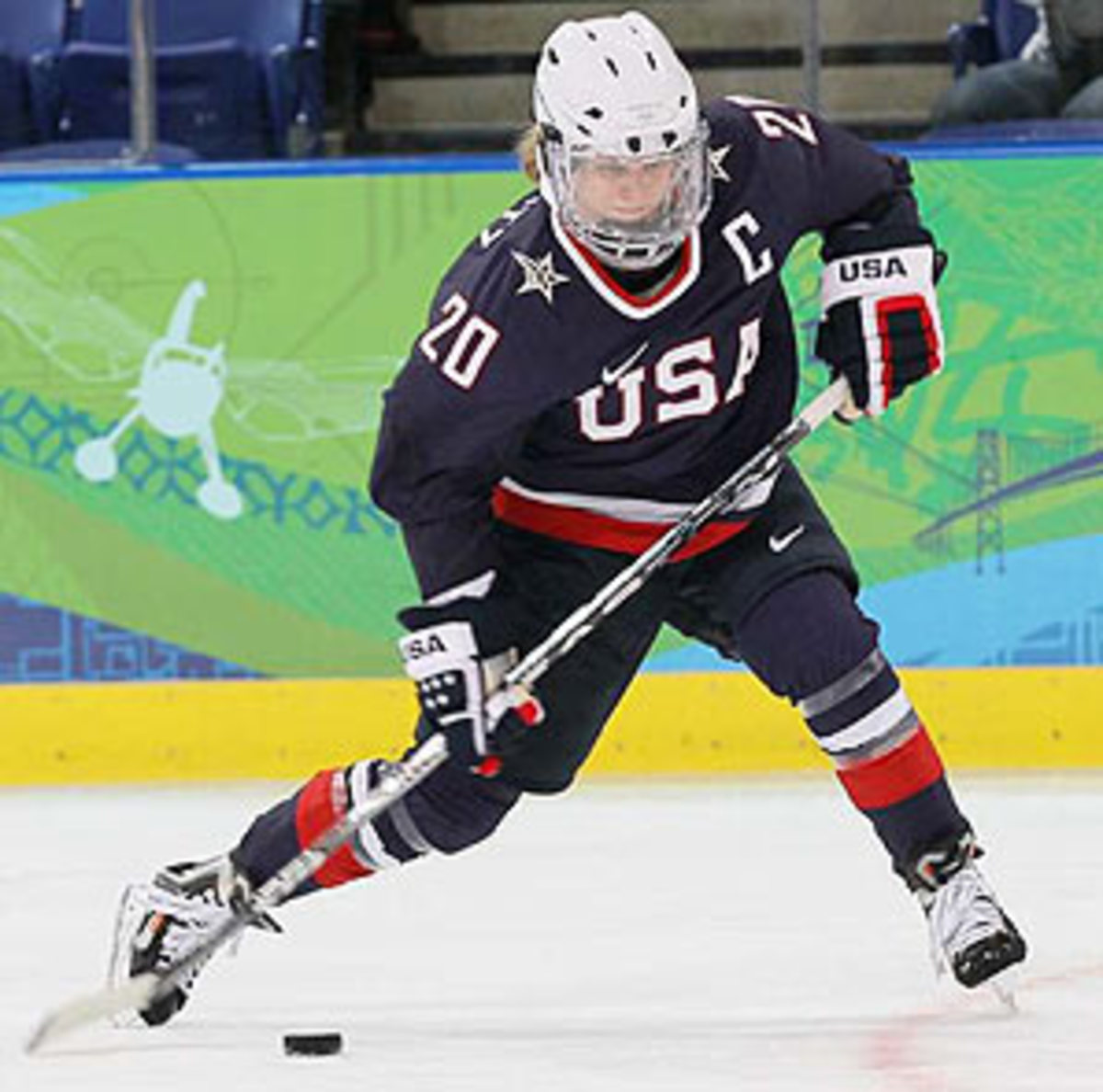
Women's hockey tries to grow, despite North American dominance
VANCOUVER, B.C. -- If you think watching a 12-1 blowout isn't fun, NatalieDarwitz will tell you playing in one isn't all that enjoyable either.
"You don't ever like beating a team 12-1," the U.S. captain said after her team defeated China on Sunday afternoon. "It's hard because you don't practice to play games like this.... It's not what we train for."
Less than 24 hours earlier, Canada had delivered the biggest defeat in Olympic women's hockey history, racking up 18 goals against Slovakia in their opener. Two Canadian women, Meghan Agosta and Jayna Hefford, potted hat tricks; Hefford finished the night with six points, tying an Olympic record; and only one player, Meaghan Mikkelson, failed to earn a point for Canada.
Such lopsided affairs tend to stir the parity pot, particularly in the women's game, which isn't fair. American and Canadian players are quick to mention its existence elsewhere when asked about the level of competition -- or lack thereof -- in their first games in Vancouver. At the World Junior Men's Championships last December, for instance, Team Canada demolished Latvia 16-0, and Team USA defeated the same team 12-1 -- evidence the blowout is by no means unique to women's hockey.
But none of the players can deny that a gap in talent and depth between the two best teams in the world and everyone else exists. And maybe it isn't closing as quickly as some would hope because, for better or worse, the women's game is growing -- not only abroad but also still within the borders of North America.
"We played four lines today," Darwitz says. "We just rolled right through [with four lines]. I think four or eight years ago, we were going [with] three [lines], maybe four. So the depth of our team has grown."
The U.S. and Canada are forced to improve because they're entrenched in a sort of arms race with each other, essentially leaving the rest of the field behind. And so as the U.S. and Canadian women push each other to higher levels, there's a distinct possibility the disparity in the field won't go away until the U.S. and Canada reach a comfortable plateau.
Finland and Sweden, the perennial also-rans, are the closest to catching the U.S. and Canada. But in the past two years, Finland and Sweden have upset the two powers just three times combined, not often enough to consider them viable threats to the U.S.-Canada hegemony.
"It comes down to depth," says USA general manager Michele Amidon. "As for forwards, Finland and Sweden, their top lines are as good as our top lines. Their top defense are as good as ours. But they don't have the depth, and I think that goes back to the number of registered female players."
China, a nation with more than 650 million women, has less than 500 registered female hockey players. Slovakia has some 250. "Just give it some time," says U.S. defenseman Angela Ruggiero. "You can't expect a nation to just adopt a sport overnight and have thousands of girls start playing. They're going to see these girls playing in the Olympics, regardless of the score, and say maybe that's something I want to try."
It's a hopeful thought, that hockey can grow in these nations simply because of the Olympic presence, but at what point does attention turn into detrimental attention? How does an 18-0 whipping help muster interest in women's hockey in Slovakia?
Perhaps it doesn't. But Slovakian goalie Zuzana Tomcikova, whose 49-save performance against Canada stole the show, can only hope. "I really hope that now that we're at the Olympics, people at home are going to watch women's hockey and a lot of young girls are going to start, and we're going to be an inspiration for them," she said, teary-eyed after the game. "So I hope that maybe our daughters will be the ones that can compete against Canada."





